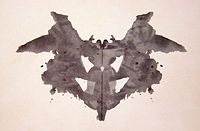
Photo from wikipedia
Simple Summary Endobronchial ultrasound (EBUS) features help differentiate between benign and malignant lymph nodes (MLNs) during transbronchial needle aspiration (TBNA). B-, power/color Doppler, and elastography modes are used during EBUS-TBNA.… Click to show full abstract
Simple Summary Endobronchial ultrasound (EBUS) features help differentiate between benign and malignant lymph nodes (MLNs) during transbronchial needle aspiration (TBNA). B-, power/color Doppler, and elastography modes are used during EBUS-TBNA. However, only few studies have assessed them simultaneously. This study evaluated multi-EBUS features (B-, power/color Doppler, and elastography modes) and established a novel scoring system. Multivariable analysis revealed that short axis (>1 cm), heterogeneous echogenicity, absence of central hilar structure, presence of coagulation necrosis sign, and blue-dominant elastographic images were independent predictors of MLNs. At three or more EBUS features predicting MLNs, our scoring system had high sensitivity and specificity (77.9 and 91.8%, respectively). The area under the receiver operating curve (AUC) was 0.894 (95% confidence interval (CI): 0.868–0.920), higher than that of B-mode features alone (AUC: 0.840 (95% CI: 0.807–0.873)). Our novel scoring system could predict MLNs more accurately than B-mode features alone. Abstract Endobronchial ultrasound (EBUS) features with B-, power/color Doppler, and elastography modes help differentiate between benign and malignant lymph nodes (MLNs) during transbronchial needle aspiration (TBNA); however, only few studies have assessed them simultaneously. We evaluated the diagnostic accuracy of each EBUS feature and aimed to establish a scoring system to predict MLNs. EBUS features of consecutive patients and final diagnosis per lymph node (LN) were examined retrospectively. In total, 594 LNs from 301 patients were analyzed. Univariable analyses revealed that EBUS features, except for round shape, could differentiate MLNs from benign LNs. Multivariable analysis revealed that short axis (>1 cm), heterogeneous echogenicity, absence of central hilar structure, presence of coagulation necrosis sign, and blue-dominant elastographic images were independent predictors of MLNs. At three or more EBUS features predicting MLNs, our scoring system had high sensitivity (77.9%) and specificity (91.8%). The area under the receiver operating curve (AUC) was 0.894 (95% confidence interval (CI): 0.868–0.920), which was higher than that of B-mode features alone (AUC: 0.840 (95% CI: 0.807–0.873)). The novel scoring system could predict MLNs more accurately than B-mode features alone. Multi-EBUS features may increase EBUS-TBNA efficiency for LN evaluation.
Journal Title: Cancers
Year Published: 2022
Link to full text (if available)
Share on Social Media: Sign Up to like & get
recommendations!